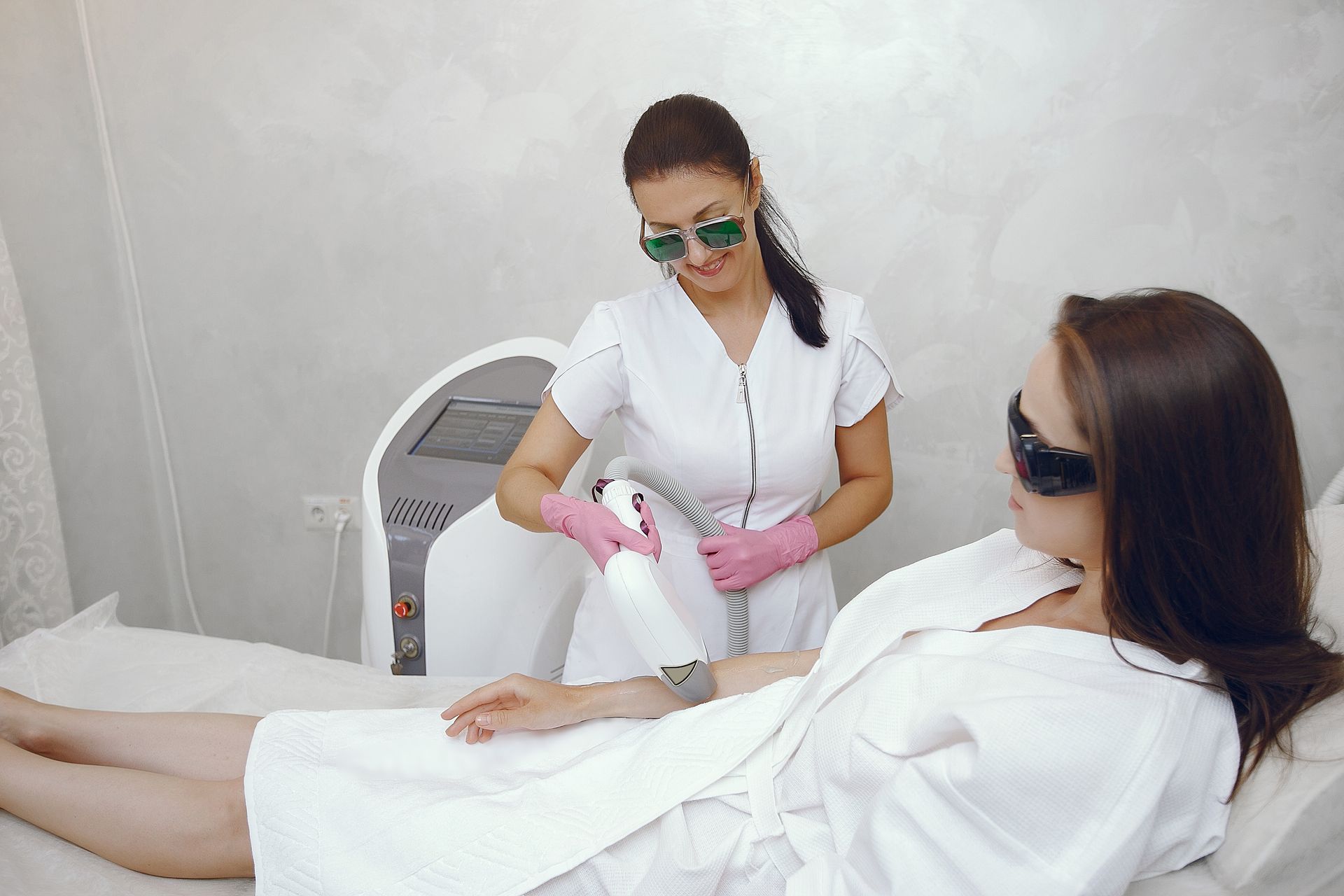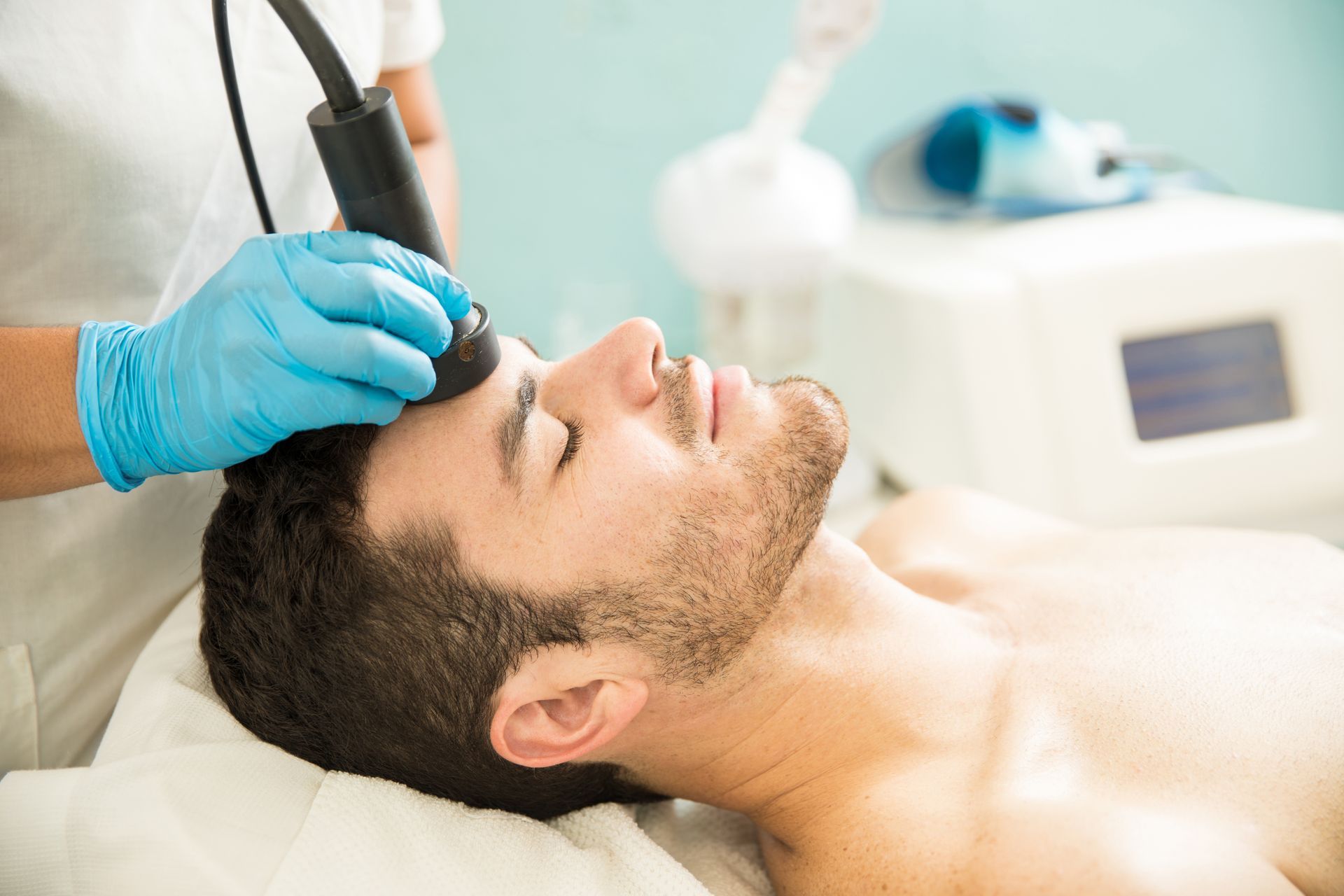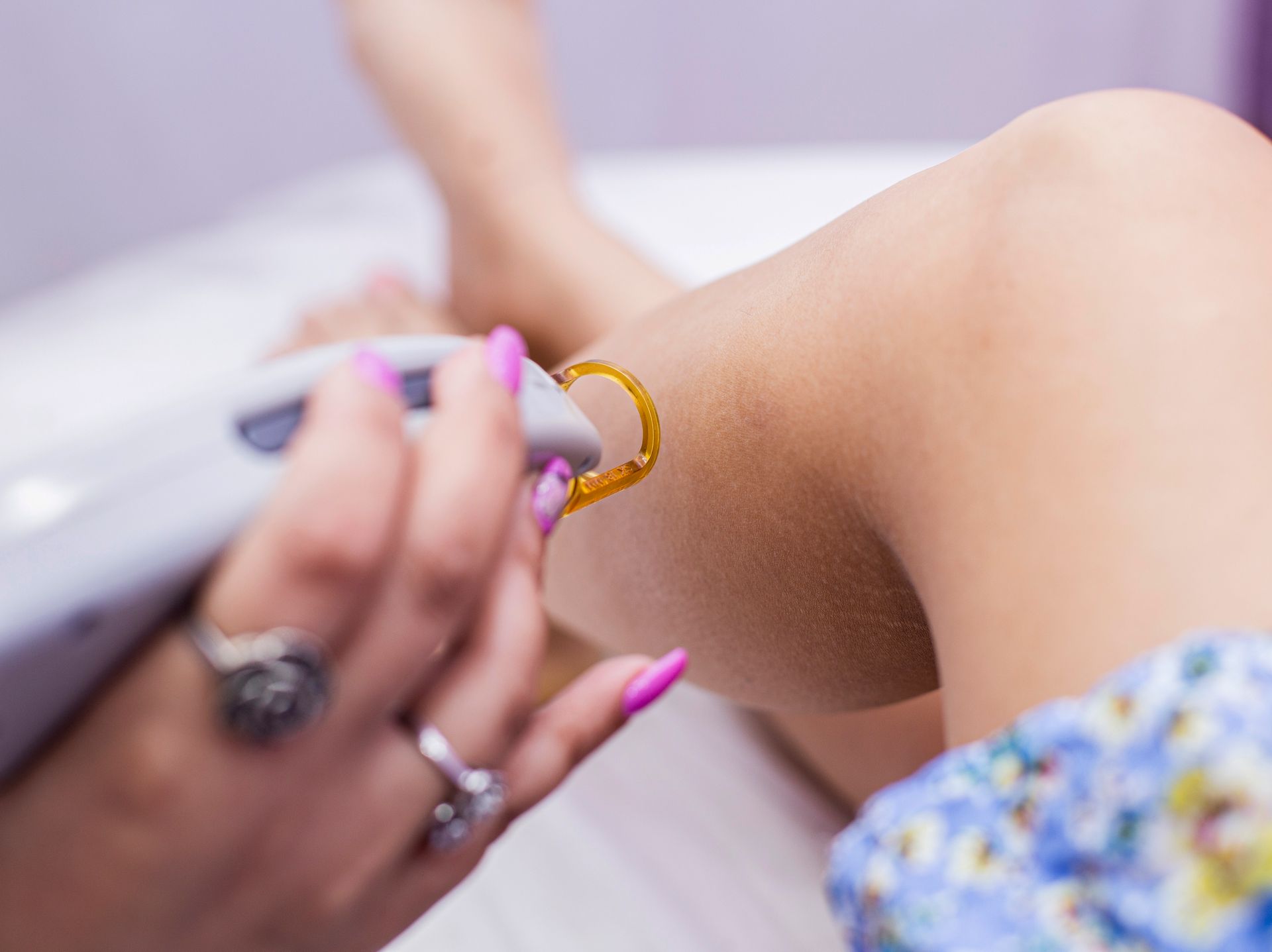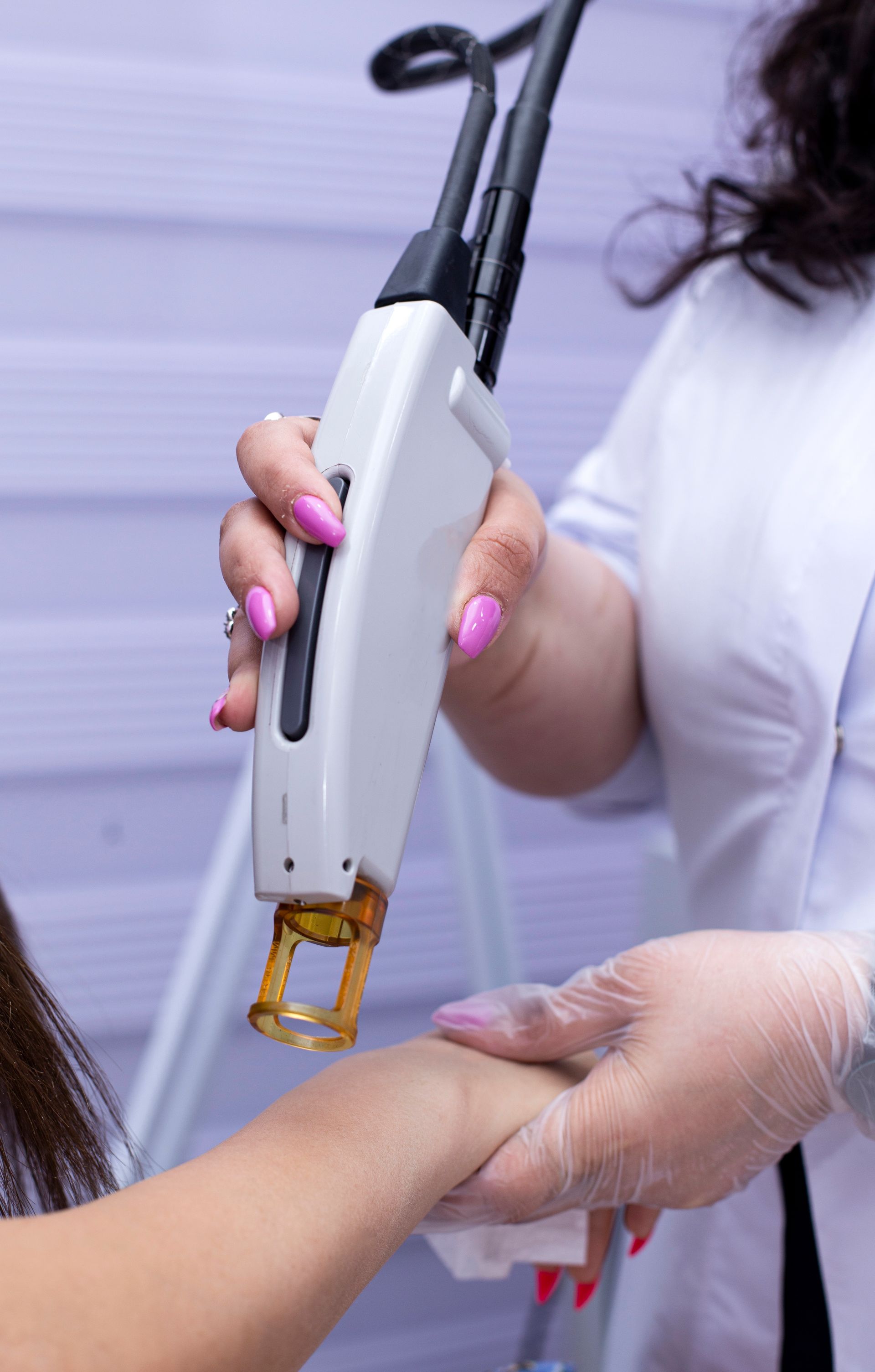Laser Hair Removal and the Fascinating Science of Hair Growth
Smooth, hairless skin has always been a goal in the world of beauty and self-care. It's a journey that has led us through various methods, from the humble razor to the ancient practice of waxing. Yet, in recent years, a remarkable innovation has taken center stage - Laser Hair Removal. But what sets this method apart from the rest, and why should we go further into the captivating science behind hair growth?
In our exploration, we begin to undertake a journey of discovery. We will peel back the layers of hair growth intricacies, uncover the inner workings of this revolutionary cosmetic procedure, and understand why it has become a cornerstone of modern self-care routines. We will reveal the benefits of laser hair removal and address the question, "Why study the science of hair growth?" so hold on to your seats. Prepare to be amazed.
The Hair Growth Cycle
Hair doesn't grow uniformly throughout our lives; instead, it goes through different stages in a cycle. Let's take a closer look at these stages and the key players in this process – our hair follicles.
Hair growth is a bit like a continuous story with several chapters. It all starts with the "Anagen" phase, where your hair actively grows. During this time, your hair is healthy, strong, and getting longer. Then comes the "Catagen" phase, which is like a brief pause in the story. Here, your hair stops growing and starts to detach from the hair follicle. It's a bit like your hair is getting ready to say goodbye. Finally, we have the "Telogen" phase, often called the resting phase. In this stage, your hair is just hanging out, not growing or falling out. Eventually, it will move on to the next "Anagen" phase and start growing again.
Understanding this cycle and the role of hair follicles helps us appreciate how laser hair removal can be so effective. It targets these follicles to disrupt the hair growth process, leading to
long-lasting hair reduction.
The Science Behind Laser Hair Removal
Laser hair removal is like a
precise, hair-seeking superhero. It uses a special kind of light, called a laser, to zap away unwanted hair. A laser can be thought of as a concentrated beam of light. When this light touches your skin, it's attracted to the dark pigment in your hair, called melanin. It's kind of like a heat-seeking missile for hair.
Once the laser finds a hair, it releases intense heat. This heat damages the hair follicle, the tiny factory we talked about earlier, that produces the hair. If the follicle gets damaged enough, it can't make hair anymore. By targeting the hair follicles with heat, laser hair removal disrupts their ability to grow new hair. It's like shutting down a hair production line.
The amazing thing about laser hair removal is its accuracy. It can target the dark hairs while leaving the surrounding skin untouched. Think of it as a sharpshooter – it hits only the target it's aiming for, not the innocent bystanders. This precision is possible because the laser's energy is absorbed by the dark pigment in the hair. So, if you have light skin and dark hair, the laser focuses on the hair and doesn't harm the skin.
Now that we've unveiled the science behind it, you can see why laser hair removal is such a popular choice for those
seeking long-term hair reduction. It's a targeted, efficient way to bid farewell to unwanted hair.
Factors Influencing Hair Growth
Have you ever wondered why some people have thick, luscious locks while others struggle with thin, sparse hair? Genetics and hormones are the root causes. Think of your genes as the instruction manual for your hair. Just like you inherit your eye color and height from your parents, your hair traits are also passed down through your family tree. If your parents or grandparents had thick, curly hair, there's a good chance you might, too. On the flip side, if they had fine, straight hair, you're more likely to have similar hair characteristics. Genetics doesn't just determine your hair type; it also influences your hair's growth pattern. Some people naturally have hair that grows quickly and abundantly, while others experience slower growth. It's all in your DNA.
Hormones are like the conductors of your body's orchestra, and they play a significant role in your hair growth symphony. One key hormone related to hair growth is called dihydrotestosterone (DHT). In some people, DHT can shrink hair follicles over time, leading to thinner hair and, in some cases, hair loss. This is why you might hear about hormonal factors contributing to conditions like male or female pattern baldness.
Hormonal changes throughout life can also affect hair growth. For example,
during pregnancy, women often experience thicker, more luxurious hair due to hormonal fluctuations. After giving birth, when hormones return to normal levels, hair can shed more than usual. Hormones are like the volume knob for your hair. They can turn it up, causing lush growth, or dial it down, leading to hair thinning or loss.
Laser Hair Removal vs. Traditional Methods
There is not just one way to say goodbye to unsightly hair; rather, there are a variety of options. Let's take a close look at how laser hair removal stacks up against the tried-and-true
traditional methods:
Shaving: Shaving is like a quick fix. It's easy, affordable, and you can do it at home. However, the results are fleeting. Within a day or two, those stubborn hairs start to reappear. Frequent shaving can also lead to skin irritation, razor burns, and ingrown hairs, making it a less-than-ideal long-term solution.
Waxing:
Waxing provides longer-lasting results compared to shaving. It rips the hair out from the root, so it takes longer for it to grow back. However, it can be painful, and you have to endure some regrowth before your next waxing session. Waxing can also lead to skin redness and irritation.
Tweezing: Tweezing is precise but best suited for small areas like eyebrows. It's not practical for larger areas of the body. Plus, it can be time-consuming and uncomfortable.
Why Laser Hair Removal Reigns Supreme
Now, let's talk about why laser hair removal is often hailed as the superior choice:
Unlike shaving, the results of laser hair removal are long-lasting. It disrupts the hair growth cycle, so you can enjoy smooth skin for an extended period.
Laser hair removal targets the hair follicles with precision, leaving the surrounding skin untouched. It's perfect for larger areas like legs, back, and chest.
Many people find laser hair removal less painful than waxing, particularly with the advancements in technology that have made the
procedure more comfortable.
Laser hair removal can significantly reduce the occurrence of
ingrown hairs compared to shaving or waxing.
While laser hair removal may require a
series of sessions for optimal results, its effectiveness and
long-term benefits often make it the preferred choice for those seeking a more permanent solution to unwanted hair.
Safety and Risks
Laser hair removal can be a fantastic solution for
achieving smooth, hair-free skin, but like any procedure, it's essential to understand the
potential side effects and take necessary precautions. Laser hair removal is generally safe, but it may cause temporary discomfort in some people. These can include:
Redness and Swelling: After a session, it's common to have some redness and swelling in the treated area. In most cases, this goes away after a few hours to a few days.
Skin Discomfort:
You might feel a sensation similar to a mild sunburn after treatment. It's typically temporary and can be eased with over-the-counter creams or cool compresses.
Pigment Changes: In rare cases, laser hair removal can lead to temporary changes in skin pigmentation. Darkening or lightening of the skin may occur, but this is usually temporary.
Blistering and Scarring:
Although rare, blistering and scarring can occur, especially if the procedure is not performed correctly or if post-treatment care instructions are not followed.
Risk for People with Dark Skin:
People with darker skin tones need to be cautious, as laser hair removal can sometimes affect pigmentation. Specialized lasers may be used for those with darker skin to reduce this risk.
Precautions and Consultation
To ensure a
safe and successful experience with laser hair removal, it's vital to take specific precautions. Start by carefully choosing a qualified provider who is licensed and experienced in performing this procedure, and don't forget to check their credentials and read reviews from previous clients to gauge their reputation.
Before your first session, scheduling a consultation with your chosen provider is essential. During this consultation, they will assess your
skin type, hair color, and medical history to tailor a treatment plan that suits your individual needs. Following their pre-treatment guidelines is equally important, which may include instructions like avoiding sun exposure and refraining from plucking or waxing in the treated areas leading up to your session.
During the procedure, always wear the protective eyewear provided to shield your eyes from the laser. Post-treatment care is essential for a smooth recovery, so adhere diligently to the instructions given by your practitioner. This may include avoiding sun exposure, applying moisturizer, and refraining from activities that could irritate the treated area.
Maintaining open communication with your provider is key. If you encounter any unusual side effects or discomfort, don't hesitate to inform them promptly. When these precautions are followed, laser hair removal can be a secure and effective method for achieving long-lasting hair reduction and attaining the smooth, hair-free skin you desire.
Conclusion
The fusion of science and technology in laser hair removal allows us to bid farewell to the age-old struggles with hair growth. It's a testament to human ingenuity and a pathway to smoother, more carefree living. So, armed with this newfound knowledge, you're better equipped to set forth your own journey towards the smooth, hair-free skin you desire, all while understanding the fascinating science that makes it possible.
BOOK YOUR FREE SESSION










